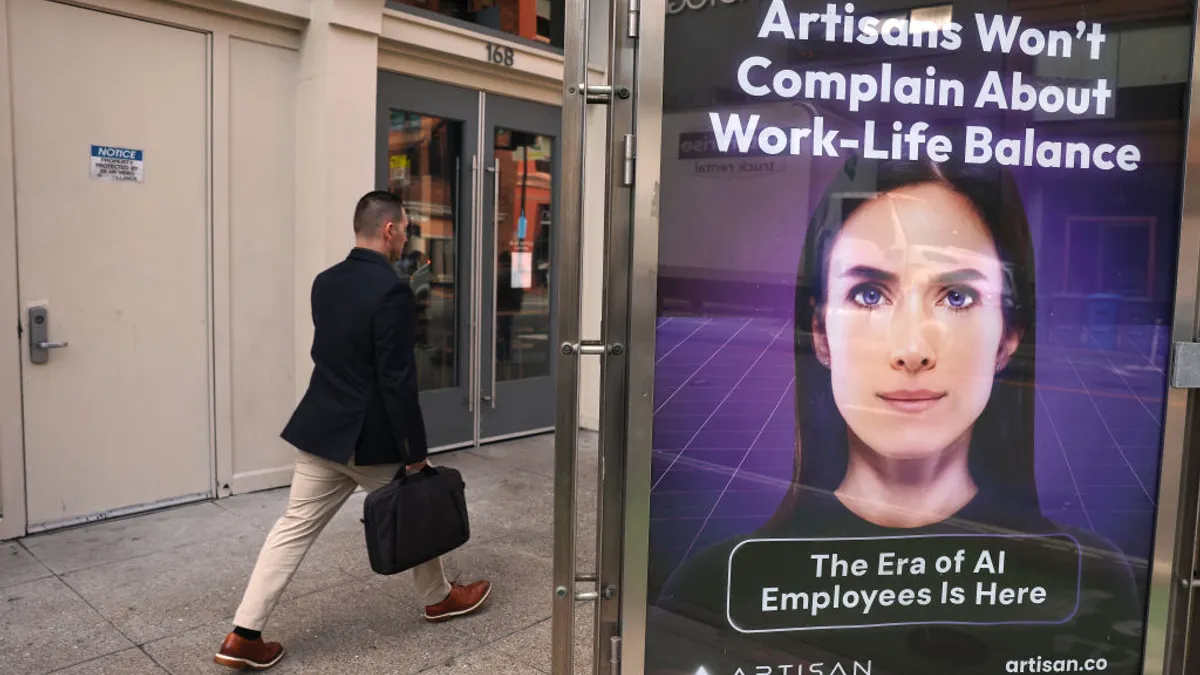Employers are expanding paid leave offerings, both in terms of who is eligible for the leave and the qualifying reasons for it.
The National Business Group on Health's 2020 Large Employers' Leave Strategy and Transformation Survey included input from 113 large employers around the country. It found that in 2019, 30% of respondents added new leave programs, 12% expanded eligibility for leave benefits and 24% increased the length of leave available.
The reasons for expansions vary. Some employers report returns in engagement and retention. And as states expand the legal requirements for leave, "employers are expanding their paid leave benefits whether they like it or not," Mercer Senior Partner Rich Fuerstenberg said in an email to HR Dive.
What's the ROI?
It's hard to evaluate the ROI of expanded leave options, according to Fuerstenberg. "For employers with large exempt populations, where salaries are a generally fixed expense with little need to backfill absent employees, the cost of expanding paid leave is considered to be small. In other words, if the 'I' in ROI is small, there's less pressure to deliver on the 'R.'"
Many theorize or claim there is at least some return to boosting leave options. "For non-exempt employees, there is a hope that turnover will be reduced but we have seen few studies that actually prove that theory," Fuerstenberg said.
Assuming legal compliance is satisfied, employers have broad leeway to design paid leave offerings as they see fit. As a result, several key extensions of paid leave have emerged.
Parental and caregiver leave
"The increase in state benefits has been one of the factors fueling the growth in employer-sponsored paid parental and caregiver leave," Fuerstenberg said. "Employer benefits of this type typically enhance the state benefits by topping the benefit up to 100% of pay (all states pay less than 100%) and may also extend the length of paid leave beyond the state entitlement."
In general, employers may need to exercise caution when integrate their own paid leave benefits with state leave benefits: "In addition to meeting the state's compliance requirements, the employer needs to modify its own policies to accurately and consistently describe how their policies coordinate with the various state leaves," Fuerstenberg said.
Many employers are lengthening paid parental leaves to include a formal "ramp back" period during which the employee gets full pay for working a partial schedule as he or she transitions back to full-time work, Fuerstenberg said.
In terms of other types of caregiving, Mercer's 2019 Survey on Absence and Disability Management revealed that nearly a fifth of respondents offered paid leave for employees to care for a sick family member, and 82% allowed employees to use sick days to care for a family member with an illness or other non-health issue.
Miscarriage leave
Various outlets are reporting an increase in miscarriage leave offerings.
NBC News reported that Reddit, for example, now offers employees up to eight and a half weeks of paid time off following a miscarriage. Katelin Holloway, then-VP of people and culture at Reddit, previously old HR Dive the company takes a holistic approach to its leave offerings that makes leave accessible to more people.
Domestic abuse leave
Leave for domestic abuse is still offered by only a small percentage of employers, a 2018 Fortune report found.
Some states and localities, however, have adopted paid "safe days" — mandates that give victims of domestic violence time to, for example, attend medical appointments and court dates, and find alternate housing.
Bereavement leave
Time off for bereavement isn't a new idea, but many companies are now expanding bereavement leave beyond the standard three to five days upon the death of an immediate family member, Fuerstenberg said.
Facebook, for example, extended its offering to 20 days, while Smuckers has added pet bereavement to its benefits.
Volunteer leave
Many companies are adding or expanding the number of paid days employees can take off for volunteering, Fuerstenberg said.
Volunteer time off, or VTO, is a benefit that can have extra appeal for employees who place a high value on work-life balance, social justice and meaning at work. Starbucks, for example, is piloting a program in partnership with Points of Life to allow employees to volunteer while getting paid.
Sabbaticals
Sabbaticals — extended paid leaves to pursue personal growth or interests — are still far from the norm, but some employers are starting to offer them as a way to attract and retain good talent.
Online real estate firm Zillow, for example, announced a benefit of six-week sabbaticals for full-time employees with at least six consecutive years of service in 2017.



















